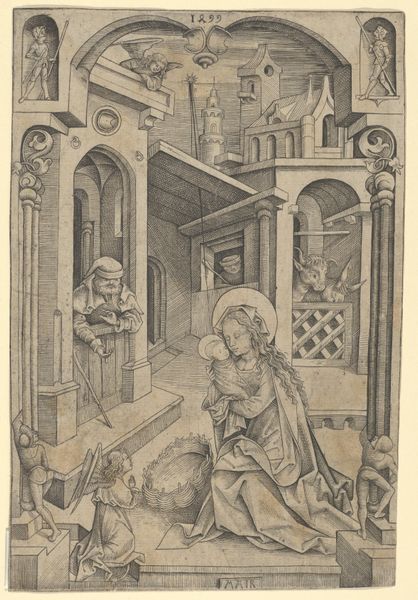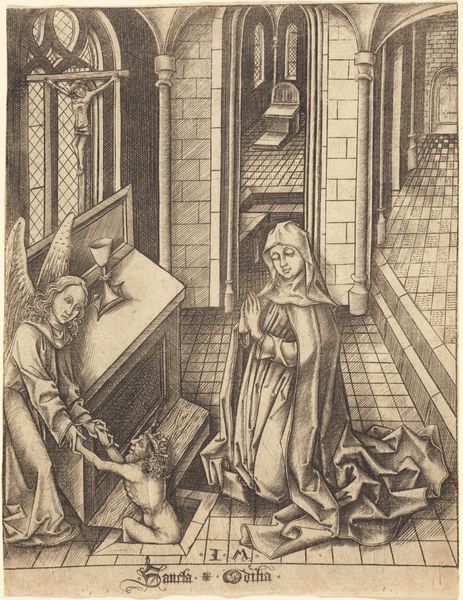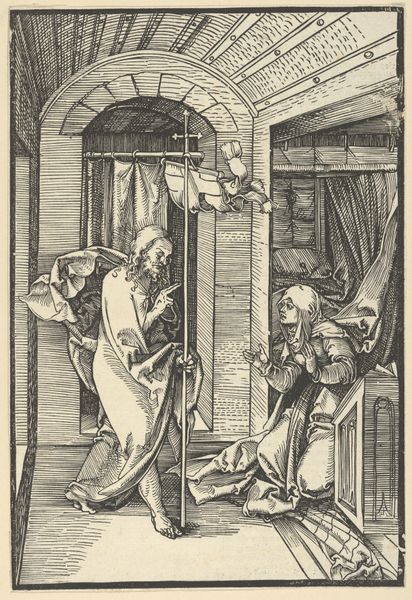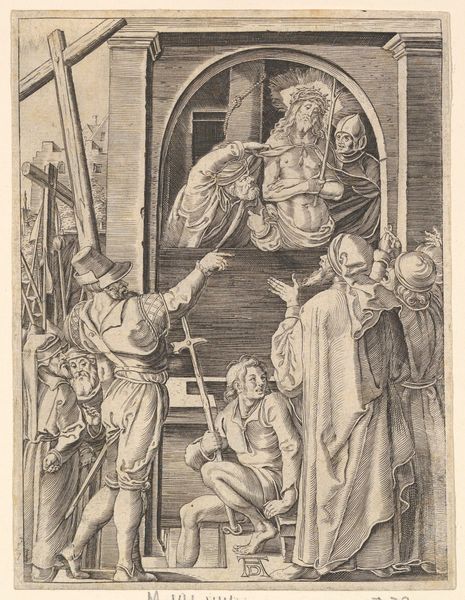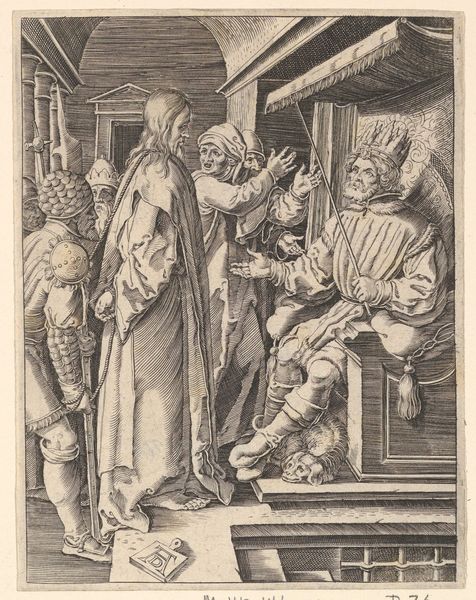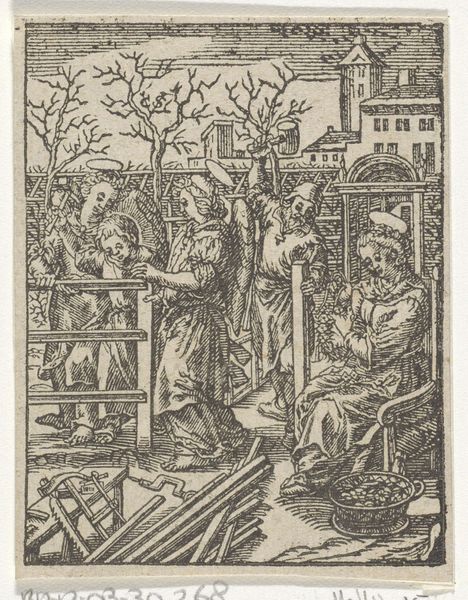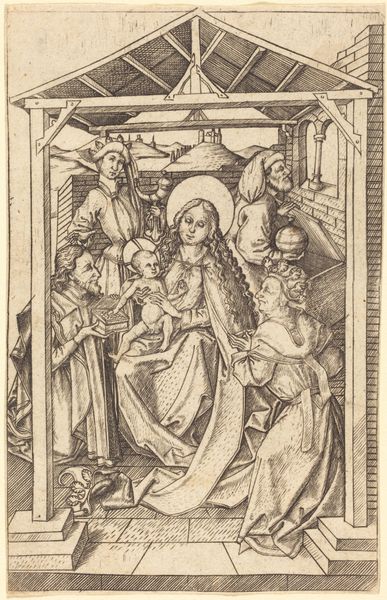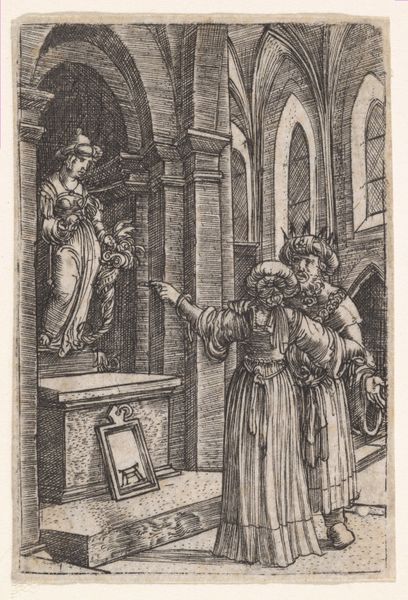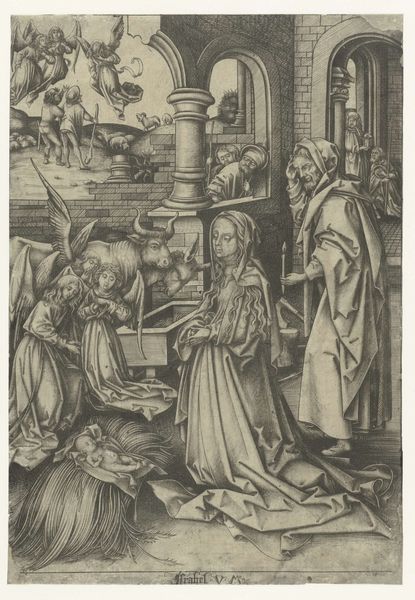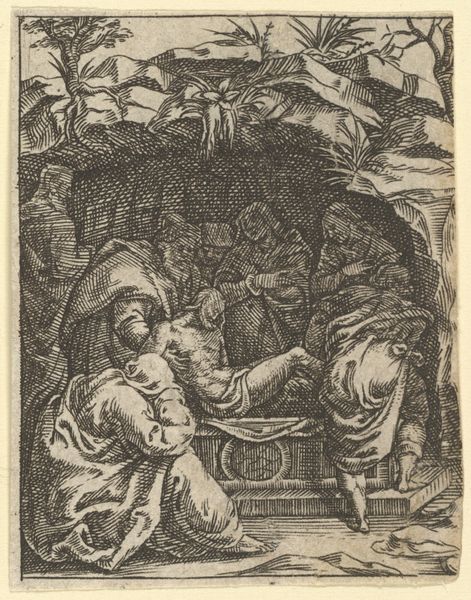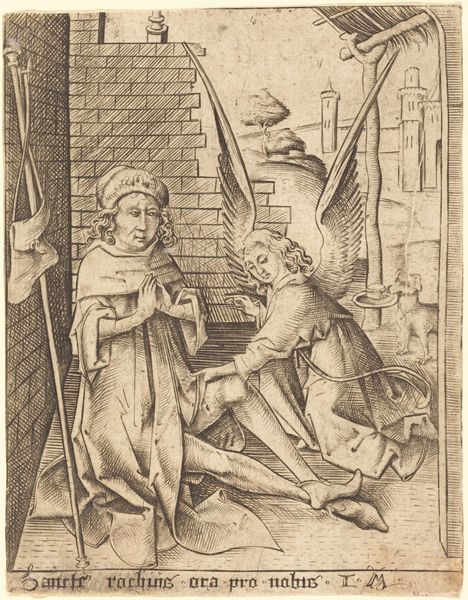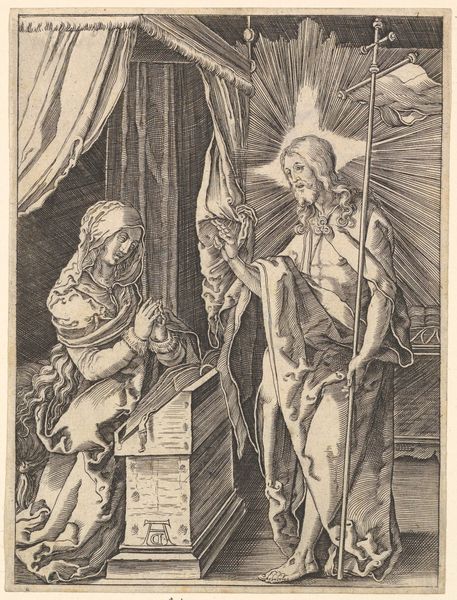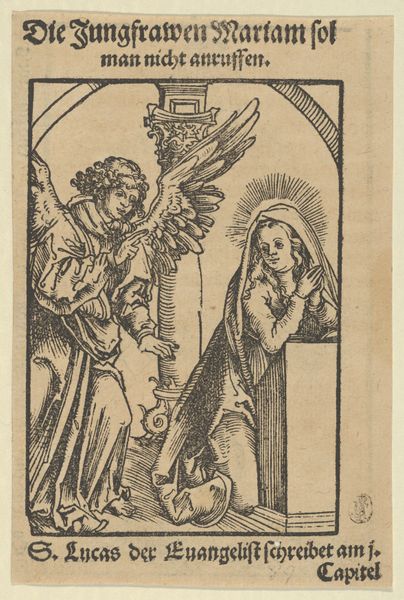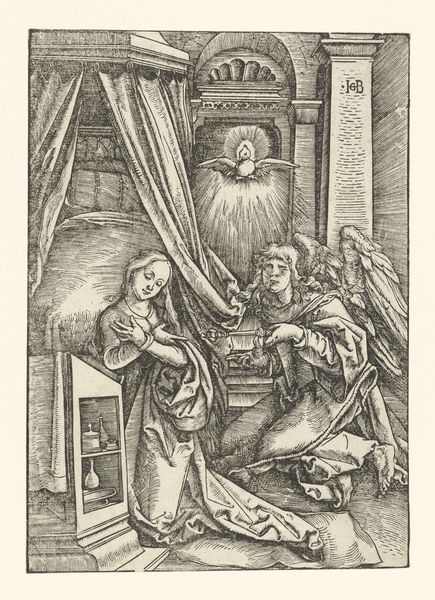
drawing, print, engraving
#
drawing
#
medieval
# print
#
figuration
#
12_15th-century
#
line
#
history-painting
#
northern-renaissance
#
engraving
Copyright: Public Domain
This print, titled "The Nativity," was made by Nicolaus Alexander Mair around 1500 using the technique of engraving. To create this image, Mair would have used a tool called a burin to carve lines into a copper plate. Ink would then be applied to the plate, and wiped off the surface, remaining only in the carved lines. The plate is then pressed onto paper, transferring the image. The varying depth and density of the lines create a sense of light, shadow, and texture. Look closely, and you can see how the cross-hatching builds up areas of shadow. The printmaking process allowed for the reproduction of images, making them more accessible to a wider audience. The skilled labor required for engraving, however, suggests that these prints were still luxury items, intended for collectors or religious institutions. Understanding the materials and processes used to create "The Nativity" allows us to appreciate the artistry and skill involved in its production, and its wider social context.
Comments
stadelmuseum about 2 years ago
⋮
A framing architecture – enlivened by small figures unmentioned in the biblical narrative of Christ's birth – opens the view onto a pictorial world inviting further discovery: Mary sitting in a courtyard and tenderly cradling the new-born Christ; Joseph, bending over a wooden parapet on the left, an ox and a donkey, a shepherd looking out of a window in the central back and two angels are present in this intimate scene. The intricate, robust buildings with their false alignment seem surreal but reflect the ‘modern’ interests of artists around 1500 in the construction of perspective and a realistic spatial representation.
Join the conversation
Join millions of artists and users on Artera today and experience the ultimate creative platform.
